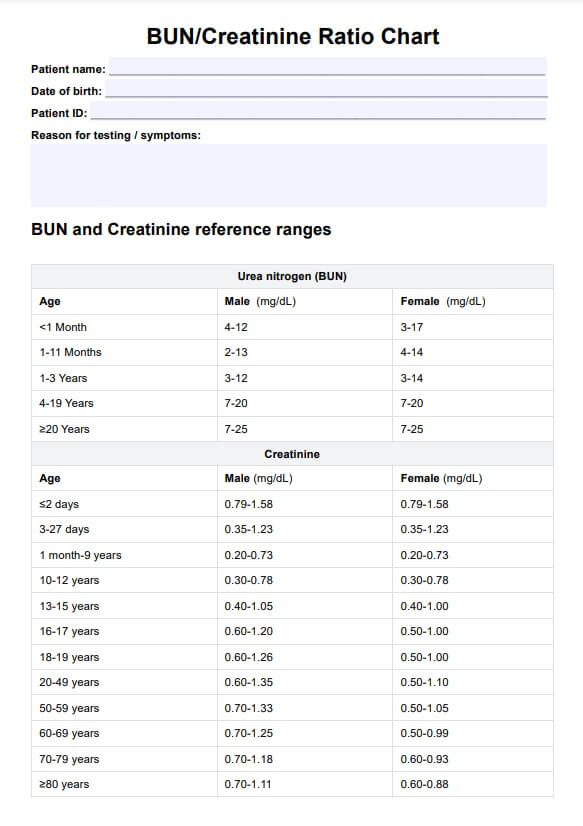Healthcare professionals, including nephrologists, general practitioners, and specialists, often request charts to assess kidney function and metabolic health.

BUN/Creatinine Ratio Chart
Track kidney function and make informed decisions for personalized healthcare with our BUN/Creatinine Ratio Chart. Optimize patient care today.
Use Template
BUN/Creatinine Ratio Chart Template
Commonly asked questions
BUN/Creatinine Ratio Charts are used in various scenarios, including routine health check-ups, nephrology assessments, preoperative evaluations, and ongoing monitoring of chronic kidney conditions.
The process involves obtaining blood samples, measuring BUN and creatinine levels, calculating the ratio, and consulting the chart to interpret results. It aids in diagnosing kidney disorders and guiding treatment decisions.
EHR and practice management software
Get started for free
*No credit card required
Free
$0/usd
Unlimited clients
Telehealth
1GB of storage
Client portal text
Automated billing and online payments











